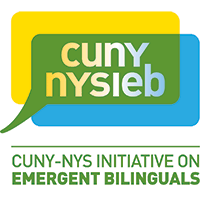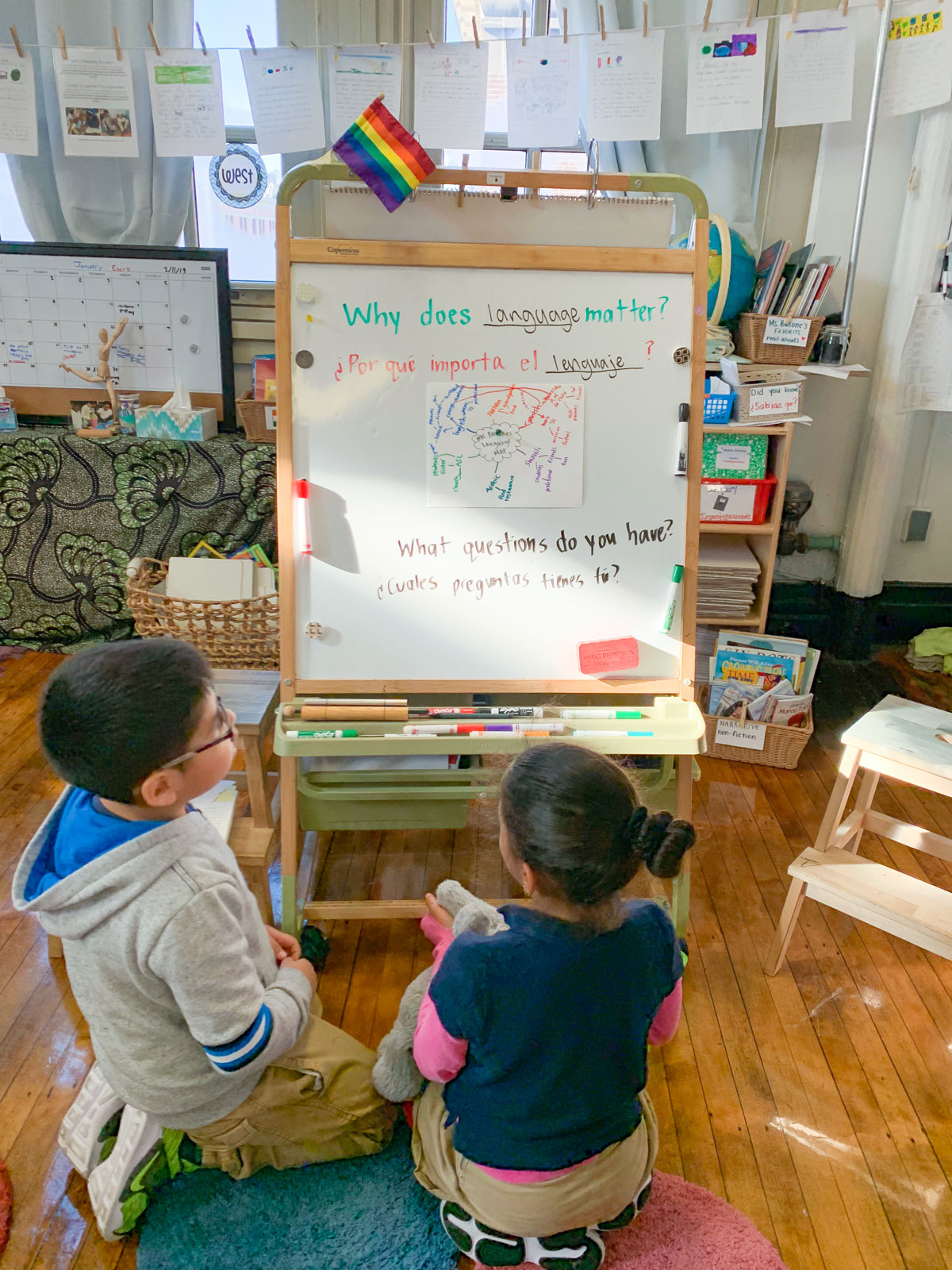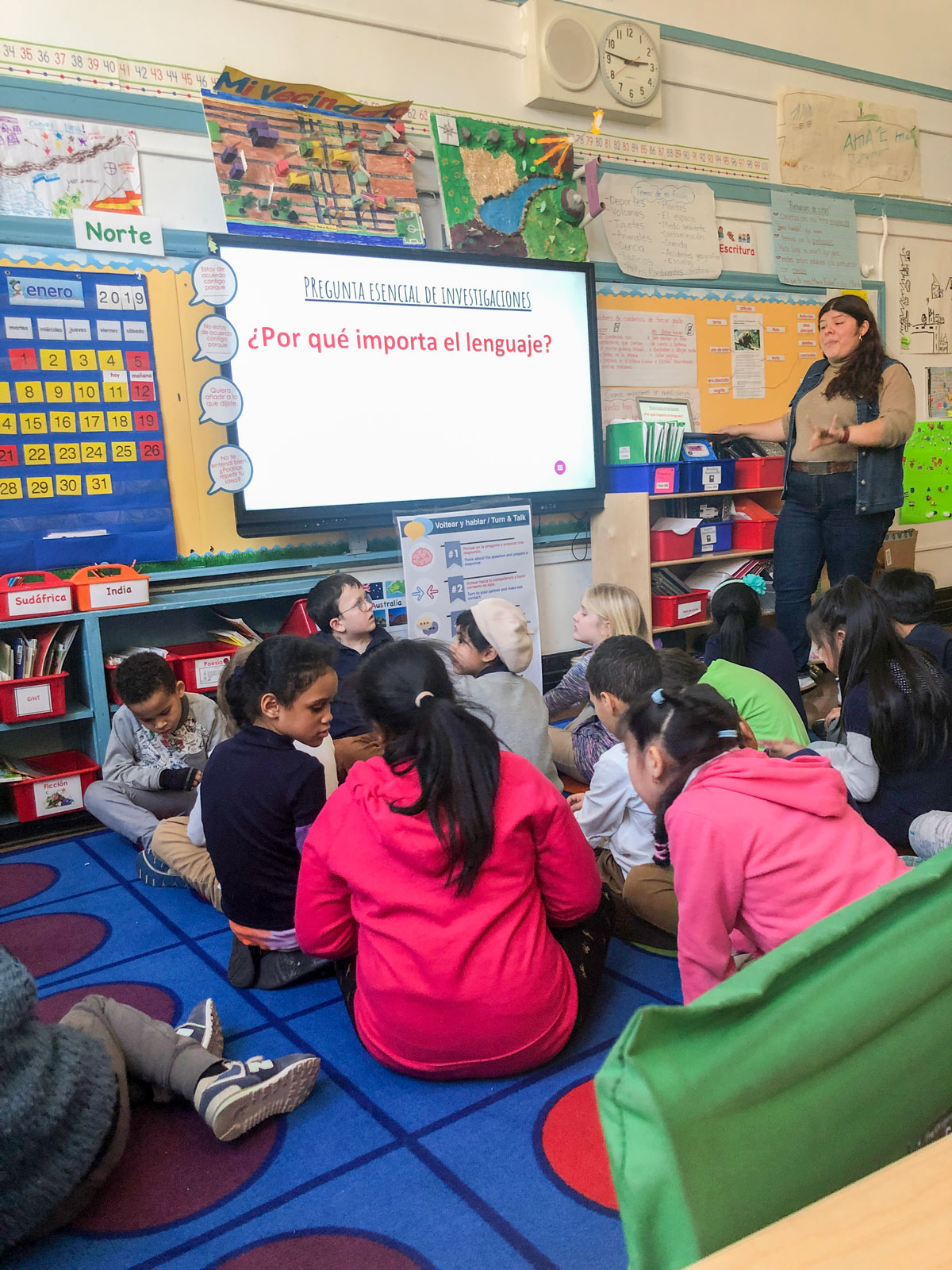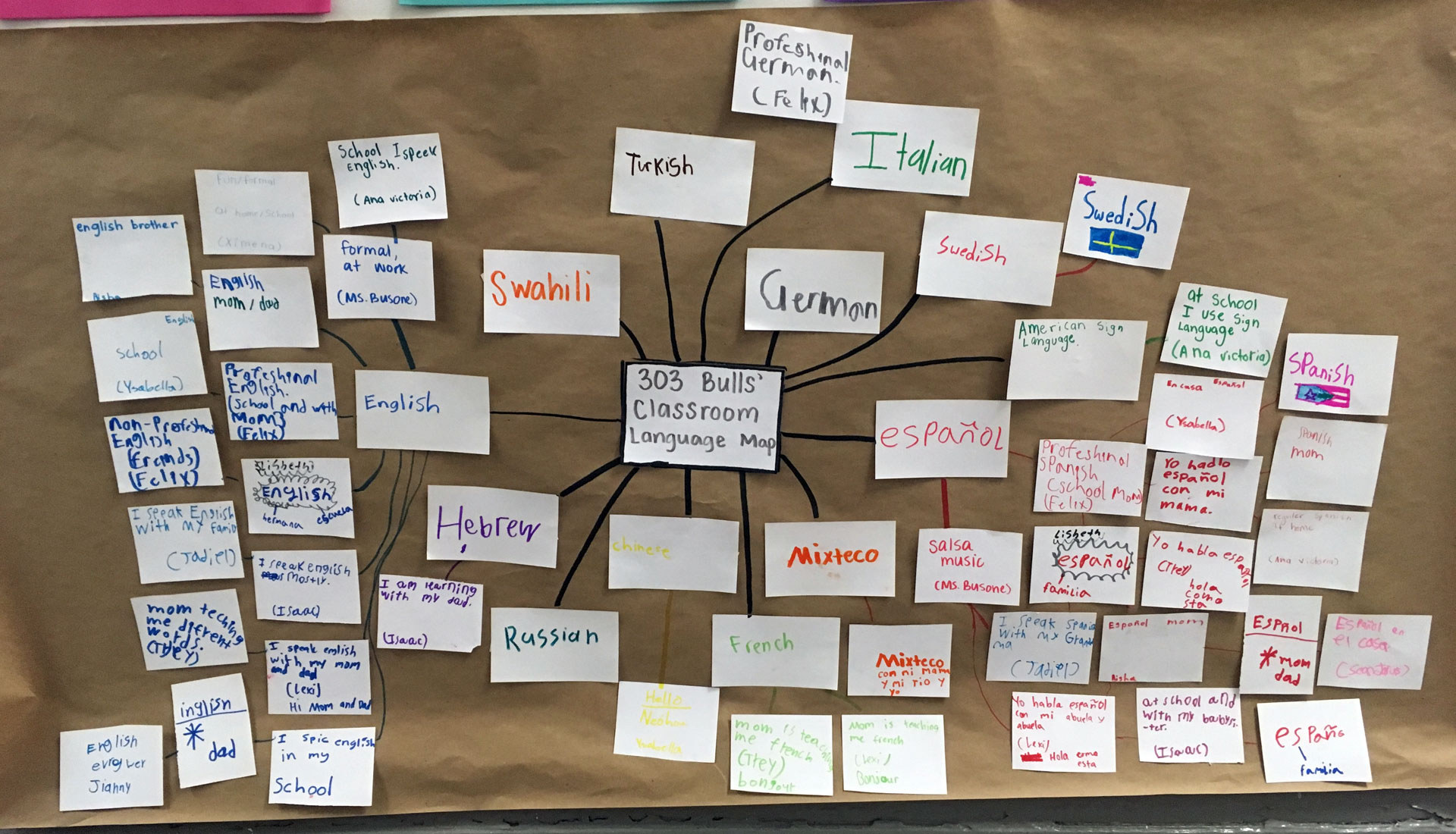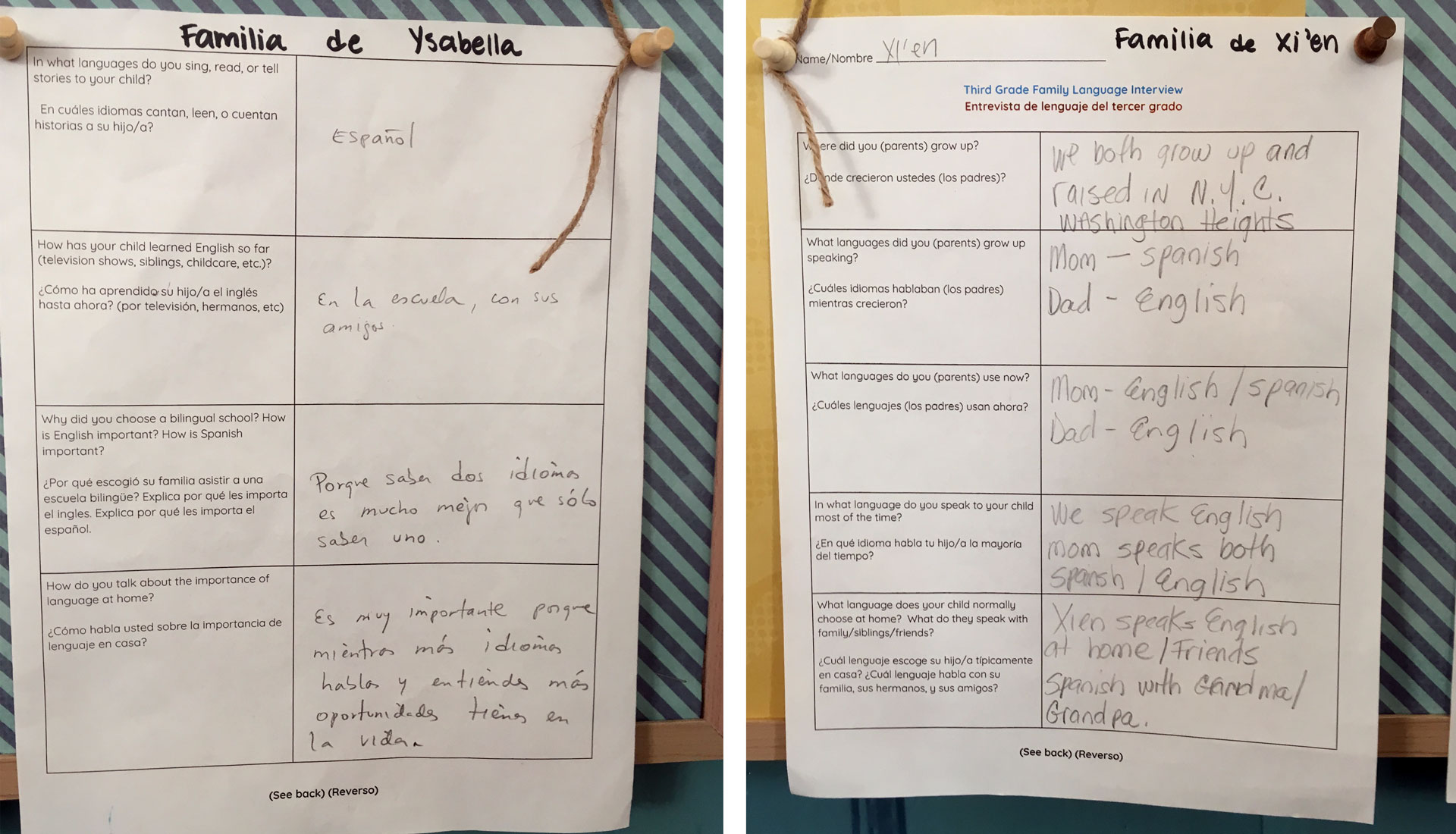CUNY-NYSIEB Ambassador: Dos Puentes Elementary School Third Grade Teachers
Diane Figueroa and Ashley Busone RodríguezMeet Diane….
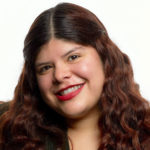
Diane Figueroa holds a M.A. in Bilingual-Bicultural Childhood Education from Teachers College, Columbia University. Her teaching philosophy centers recognizing students’ language identities and creating an environment where students have the agency to navigate through different intersectional spaces. Prior to her masters, she studied at UC Berkeley with a double major in Spanish language and literature and Social Welfare with a minor in Education. She has worked with communities in the Bay Area, Los Angeles and abroad.
Meet Ashley….
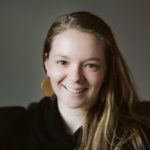
Prior to teaching in elementary schools, Ashley Busone Rodríguez taught English for speakers of other languages to adults in Harlem, Boston, Tanzania, and Chile. Her interest in bilingual education stems from her research on Chilean bilingual schools. Ashley’s teaching philosophy is grounded in the Freirian notion that education is a political act and that every student deserves to partake in the co-creation of their education. Ashley holds a M.S. Ed in Bilingual Education from The City College of New York and a B.A. in Spanish and Community Development.
Take a Peek into Diane & Ashley’s Classrooms
School/Escuela
Dos Puentes Elementary School, Washington Heights, New York City
Escuela pública Dos Puentes en la ciudad de nueva york.
DIANE’S Classroom
Fast Facts
3rd Grade Dual Language Bilingual, Spanish side
Model: Side by Side; one teacher teaches in English and the other (Diane) teaches in Spanish. Two groups of students alternate daily between the rooms.
Language use: Diane also designed separate, “transformational translanguaging spaces” in her classroom. These spaces occurred during Inquiry (Social Studies).
ASHLEY’S Classroom
Fast Facts
3rd Grade Dual Language Integrated, Co-Teaching (ICT)
Model: Self-Contained language model; two teachers provide instruction to one group of children: some with and others without learning differences and Individualized Education Plans (IEPs).
Language use: In addition to having designated times (alternating days) for students to learn in English and in Spanish, Ashley and her coteacher designed separate, “transformational translanguaging spaces” in her classroom. These spaces occurred during Inquiry (Social Studies).
La clase de DIANE
Información breve
3er grado, Dual/Bilingüe, Lado del español
Modelo: Lado a lado/Paralelo; una maestra enseña en inglés y la otra enseña en español. Dos grupos de estudiantes alternan diariamente entre los salones.
Uso del lenguaje: Diane designó un tiempo aparte para “espacios transformativos de translenguaje”, cuales tomaron lugar durante los periodos de Investigaciones (estudios sociales).
La clase de ASHLEY
Información breve
3er grado, Clase Integrada y Dual/Bilingüe, Co-enseñanza (ICT)
Modelo:Una clase integrada (ICT), las dos maestras enseñan en el mismo salón; algunos estudiantes tienen diferencias del aprendizaje y Planes Educativos Individualizados (IEPs).
Uso del lenguaje: Ashley diseñó un tiempo aparte: “espacios transformativos de translenguaje”, cuales tomaron lugar durante los periodos de Investigaciones (estudios sociales).
Unit Overview
This webpage provides 3 lesson snapshots from a larger inquiry unit: Why does Language Matter?
As part of this mini-inquiry unit, students examined, investigated, and explored their own language identities by analyzing the self, their family, and their community. This inquiry unit served the purpose of creating a learning space for understanding language as a fluid and ever-changing facet of students’ intersectional identities
¿Por qué importa el lenguaje?
Resumen de la unidad
Esta página les dará un vistazo a 3 lecciones de una unidad de investigación: ¿Por qué importa el lenguaje?
Diane y Ashley empezaron a trabajar en este proyecto por medio de una unidad de Estudios Sociales (Investigación) que previamente se enseñó utilizando la pregunta esencial: “¿Por qué importa la geografía?”. Después de estudiar a los países del mundo, sus accidentes geográficos, y sus culturas, los estudiantes se interesaron especialmente en los idiomas que se hablan en diferentes comunidades del mundo. Para desarrollar la curiosidad de los estudiantes, a las maestras se les ocurrió una nueva pregunta: “¿Por qué importa el lenguaje?
Como parte de esta unidad de investigación, los alumnos examinaron, investigaron, y exploraron sus identidades lingüísticas personales, familiares, y comunitarias. Esta unidad de investigación sirvió para crear un espacio de aprendizaje para entender el lenguaje como una faceta fluida y cambiante de las identidades interseccionales de los estudiantes.
Lesson Snapshot: Personal Linguistic Maps
Vistazo de una lección: Mapas lingüísticos
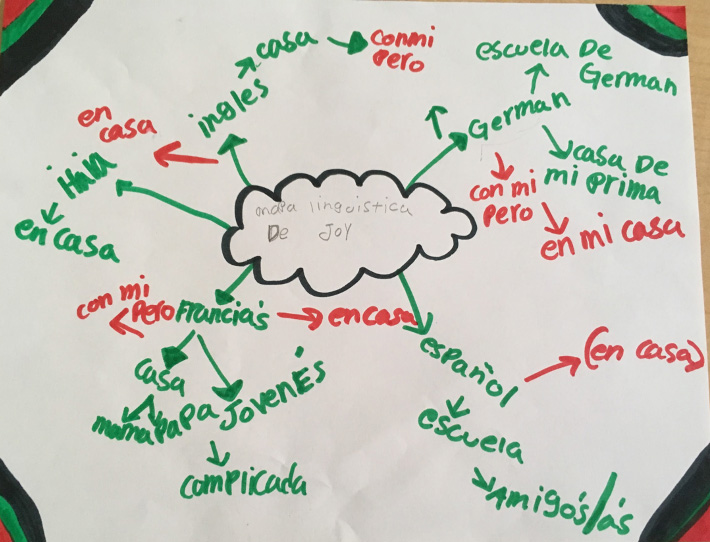
Students explored the question, Why does Language Matter?
Students explored the question, Why does Language Matter?, on a personal level by making personal linguistic maps addressing the different ways they language, and how their language practices vary depending on the people or places they interact with.
The teachers modeled their own linguistic maps first. The transparency of teachers sharing their linguistic histories and aspirations with students first was an important facet of this project and one that sparked many meaningful conversations and reflections.
Finally, students embarked on the creation of their own language maps. Each map shows all the linguistic identities of the student. Students used these maps as springboards to ask one another questions about their linguistic identities and the importance of language in their own lives.
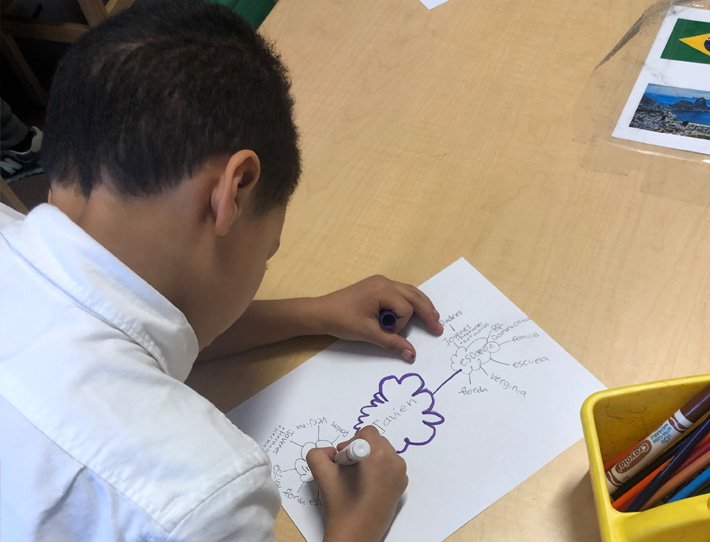
Los estudiantes exploraron la pregunta, ¿Por qué importa el lenguaje?
Los estudiantes exploraron la pregunta, ¿Por qué importa el lenguaje?, primero en un nivel personal creando mapas lingüísticos que incluyen las diversas maneras que usan el lenguaje, y cómo varían sus practicas lingüísticas dependiendo en las personas y los lugares.
Las maestras primero modelaron sus propios mapas lingüísticos. Compartir sus historias y aspiraciones lingüísticas con los estudiantes fue una faceta importante de este proyecto, cual provocó muchas conversaciones y reflexiones significativas.
Finalmente, los estudiantes crearon sus propios mapas lingüísticos. Cada mapa muestra todas las identidades lingüísticas del individuo. Los estudiantes usaron estos mapas para hacerse preguntas del uno al otro sobre sus identidades lingüísticas y la importancia del lenguaje en sus propias vidas.
Lesson Snapshot: Family Interviews
Students interviewed their parents and guardians about their language practices with questions like “When did you learn the languages that you know? Why?” and “Why do you think it’s important for me to be bilingual?”. After these interviews, during Family Friday where parents spend the first period of the day with students learning in the classroom, students taught their parents to make linguistic maps and together they explored the language trajectories of their families.
Vistazo de una lección: Entrevistas familiar
Los estudiantes entrevistaron a sus padres y guardianes acerca de sus prácticas lingüísticas con preguntas como ‘¿Cuándo aprendiste los idiomas que sabes? ¿Por qué?’ y ‘¿Por qué crees que es importante que yo sea bilingüe?’ Después de estas entrevistas, durante el Viernes familiar, donde los padres pasan el primer período del día con los estudiantes aprendiendo en el aula, los estudiantes les enseñaron a sus padres a hacer mapas lingüísticos y juntos exploraron las trayectorias lingüísticas de sus familias.
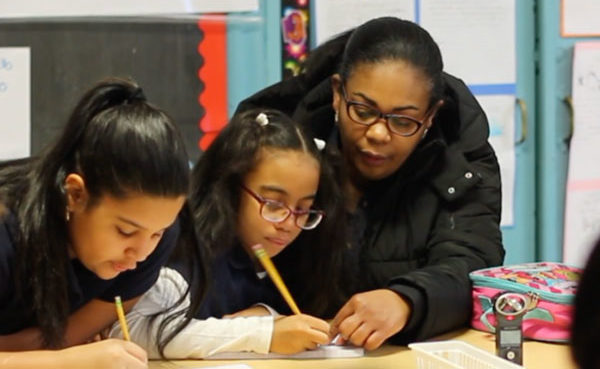
Los estudiantes entrevistaron a sus padres y guardianes acerca de sus prácticas lingüísticas.
Students interviewed their parents and guardians about their language practices.
Después del viernes familiar, los estudiantes juntaron toda la información e hicieron un diagrama más grande de todas las prácticas lingüísticas de nuestra clase.
Entrevista de lenguaje del tercer grado
Lesson Snapshot: Community Walk
Vistazo de una lección: Caminata en la comunidad
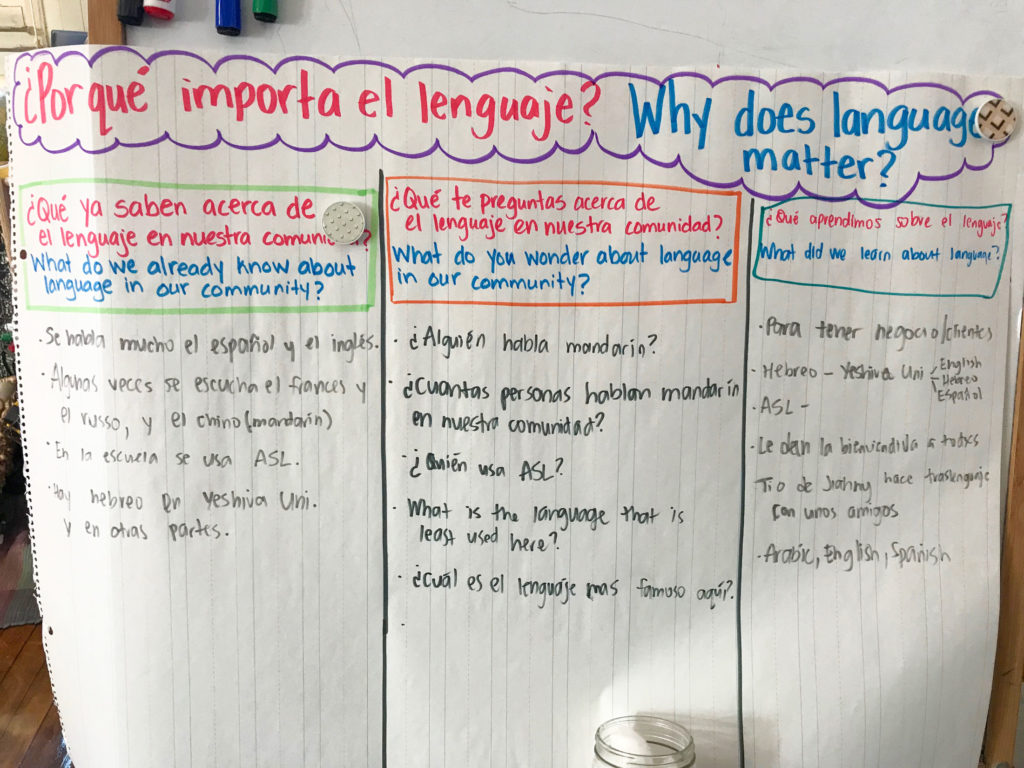
Students embarked on a walk around their community as ethnographers
Towards the end of the unit, students embarked on a walk around their community as ethnographers to explore the language practices present there. Students brought their notebooks and interviewed local business owners, neighbors, and community workers to learn about the different ways they use language and why. Students were encouraged to take photographs of signs, write down conversations and observations, and closely observe the languages present in their community.
Students observed that different languages are used in different ways and by different members, for different reasons. They were especially surprised to meet Arabic and Chinese speaking store owners who had learned both English and Spanish for the purpose of running their businesses. Students made observations about some languages being more prevalent than others.
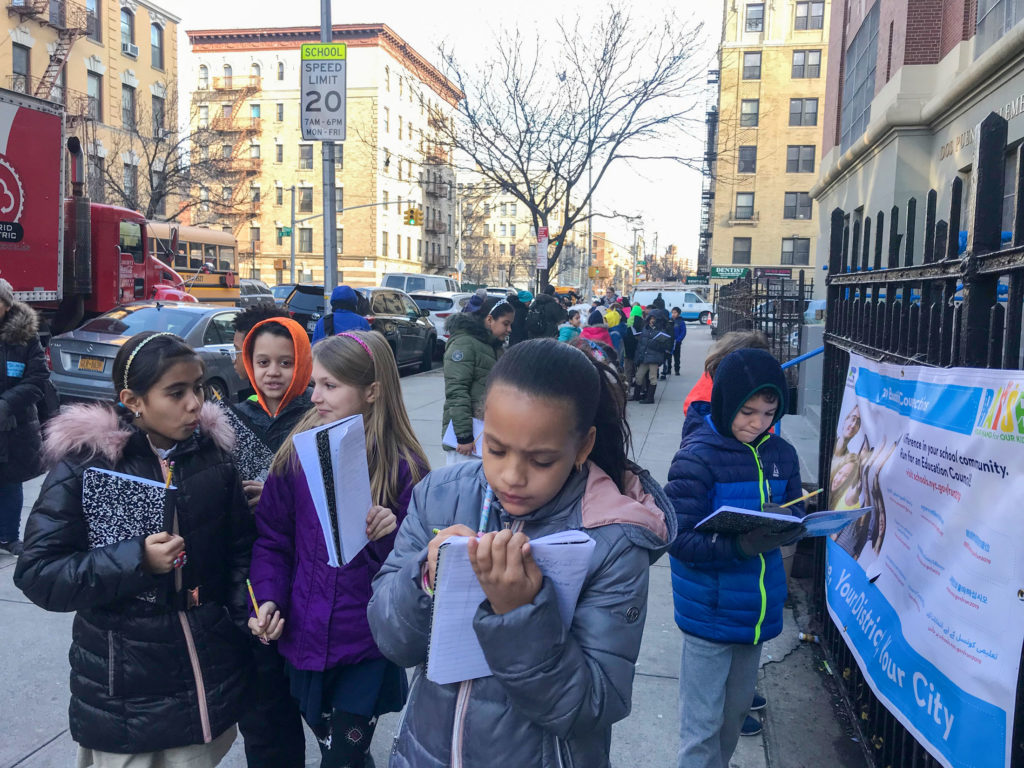
Los estudiantes embarcaron en una caminata de su comunidad como etnógrafos
Hacia el final de la unidad, los estudiantes embarcaron en una caminata de su comunidad, como etnógrafos, para observar las prácticas lingüísticas presentes ahí. Los estudiantes trajeron sus cuadernos y entrevistaron a dueños de negocios, vecinos, y trabajadores de la comunidad para aprender sobre todas las diversas maneras que usan el lenguaje. Motivamos a los estudiantes a tomar fotos de carteles, anotar conversaciones y observaciones, y observar atentamente los idiomas presentes en su comunidad.
Los estudiantes observaron que muchos miembros de la comunidad usan el lenguaje de modos diferentes por motivos diferentes. Muchos se sorprendieron que dueños de negocios árabes y chinos habían aprendido inglés y español para comunicarse con sus clientes. Los estudiantes también hicieron observaciones sobre los idiomas que más se encuentran en su comunidad.
The Power of Translanguaging in the Classroom: Ashley & Diane Reflect
El poder del translenguaje en el aula: Reflexiones de Ashley & Diane
- To analyze the role of language and power in and outside of the classroom. Teachers felt that this was a rich opportunity for students to observe and discuss the ways in which English and Spanish are viewed with different levels of importance or given different privileges in and outside of the classroom.
- To create and foster transparency about linguistic identity in the classroom community. When students began to ask questions about their teachers’, peers’, and families’ linguistic identities they started to form their own understandings of themselves as multilingual people and members of society.
- To validate students’ language learning. As members of a multilingual community and a dual-language school, students deserve this opportunity to express the importance of multilingualism in their own lives.
- To rationalize their language practices. Students experienced the power of metacognition when they explained their own language practices and asked their peers, families and educators about theirs. In this act of asking and explaining, students began to defend their own language practices and are able to tell others about why they make the linguistic decisions that they do.
- Analizar el papel del lenguaje y el poder dentro y fuera del aula. Las maestras sintieron que esta era una gran oportunidad para que los estudiantes observen y discutan las formas en que se percibe el inglés y el español con diferentes niveles de importancia o se les otorgan diferentes privilegios dentro y fuera del aula.
- Crear y fomentar la transparencia sobre la identidad lingüística en la comunidad del aula. Cuando los estudiantes comenzaron a hacer preguntas sobre las identidades lingüísticas de sus maestros, compañeros y familias, comenzaron a formar sus propios entendimientos de sí mismos como personas multilingües y miembros de la sociedad.
- Validar el aprendizaje de idiomas de los alumnos. Como miembros de una comunidad multilingüe y de una escuela bilingüe, los estudiantes merecen esta oportunidad de expresar la importancia del multilingüismo en sus propias vidas.
- Racionalizar sus prácticas lingüísticas. Los estudiantes experimentaron el poder de la metacognición cuando explicaron sus propias prácticas lingüísticas y les preguntaron a sus compañeros, familias, y educadores sobre las suyas. En este acto de preguntar y explicar, los estudiantes comenzaron a defender sus propias prácticas lingüísticas y explicar por qué toman las decisiones lingüísticas que toman.
